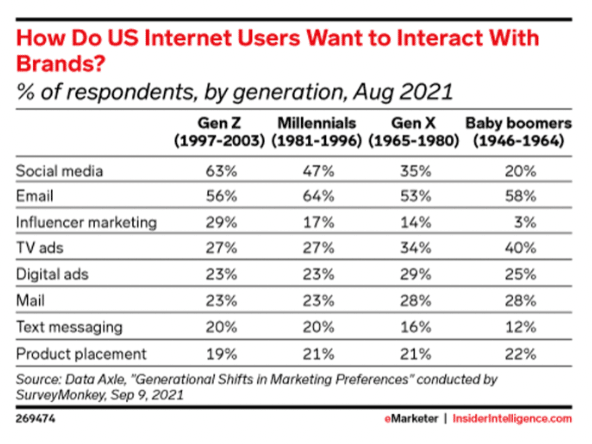While social media has always been a bit of an unruly beast, Twitter of late, under the stewardship of Mr. Musk, has been going through its own set of unique upheavals. I’m not going to chronicle the issues, but really use them to draw attention to the importance of rebalancing your communication portfolio if you haven’t already.
| I’m sure you noticed that the reach of your posts, especially on Facebook, has dipped significantly. I saw a report the other day that says 6% or less of your fans see your posts organically. So much for building “community.” Like Twitter, let’s not forget that Facebook is a commercial enterprise and that they are interested in turning a profit. Which is fine, until you begin to see dismal performance like this and begin to realize that organic posting has serious limitations. Now there are multiple ways to try to increase organic reach. For instance, you can increase posting frequency, create posts with better-quality images and videos, incorporate motion graphics in your posts, and share important news about your organizations. But truth be told, if you want to reach more of your community, you’re going to need to pay for distribution. And for those well-acquainted with Facebook, in particular, that means either boosting or paying for ads. All social media platforms make it simple to boost your posts; usually, it is no more complicated than creating the post you want to boost, picking your target, setting the duration, and then setting the budget. So, inadvertently, what was “owned” is now “paid media. And that means you have to balance your “communication portfolio” among the three tactics: “earned,” “owned”, and “paid” media. Again, the planning principles are the same as before: |
1. Determine if your audience is still there. Sounds silly. Of course, your peeps are there. Or are they? Many may have migrated away from Twitter and Facebook and made LinkedIn, Instagram, or one of the lesser-known apps like BeReal, Threads, or Substack their primary, go-to social media app. As with any market, it fractures over time and more and more niche players garner a share of the market at the expense of the market leaders. |
2. Know (not just understand) the relative impact of each effort as it helps you reach your goals. One of our mantras is “predictability and control.” While we all love surprise success, the truth is if you have a pulse on your market, you should be good at forecasting your yield. And that means within a 10% margin of error. Any more means you need to revisit your assumptions. For those who plan paid efforts on digital media, most, if not all platforms, will give you an estimate of how many people you’ll reach. And from there, you should be able to estimate how many positive responses you’ll get. If you aren’t planning to achieve a goal, then stop what you are doing and start. |
3. Allocate appropriate resources based on results vs. simply boxing to a budget. Said another way, if you still want to use social media (or any earned media tactic), make sure you have a realistic goal in mind. Build a model, work through the assumptions, and then, when you get to the forecast you need. If you are buying adds and boosting, calculate the budget and shift that into your “paid” column. What you might find is that your campaigns were doomed from the start because they never had the critical mass to reach your goals. It is the most common explanation for missing a forecast. It is thinking that simply buying a can of paint will be sufficient to cover a wall. Unless you accurately calculate the square footage of the wall and check the amount of surface the can of paint will cover, you might find your coverage is too thin or there are going to be places you can’t cover. |
4. Understand that “earned” media is getting harder and harder to generate. This is the part that hurts organizations that are working with tight budgets. There are far fewer media outlets that you can use to generate “earned” media. And the aforementioned changes in how the main social media channels operate create even more headwinds. So, in evaluating “earned,” “owned”, and “paid”, recognize that “owned” and “paid” might be worth prioritizing over “earned.” This means being open with your leadership and asking for a budget to support those two legs of the communication stool. |
| One caveat to all this: in a year, this will evolve. If the past has taught us anything, it is that the media landscape keeps shifting, and you need to be constantly vigilant about how these changes affect your efforts. One thing we know for sure is that carefully balancing the three components of your communications effort is critical to meeting your marketing goals. If you have any questions or comments, feel free to reach out to me at mtinati@kineticsmarcom.com. |
